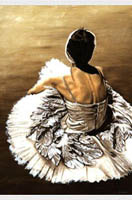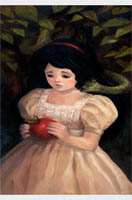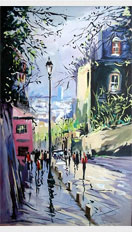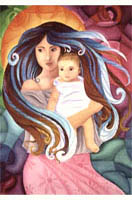Oil painting -> List of Painters -> Alessandro Allori
EARLY DAYS:
Alessandro Algardi was an Italian Baroque sculptor and architect, who is widely considered to be one of the most important sculptors of the early Baroque period. He was born in Bologna, Italy in 1598 and showed an interest in art from a young age. He initially apprenticed under his father, a wood-carver, and then studied in Rome under the renowned sculptor, Francesco Cavallini, who taught him to create sculptures in the classical style.
Algardi's early works were mainly small reliefs and statues, but he soon began to receive commissions for larger projects. In 1621, he completed a sculpture of the Virgin Mary for the Church of Sant'Agnese in Rome, which was very well received. This was followed by a series of commissions from prominent churches and patrons, such as the Church of Santa Maria della Vittoria and the Barberini family.
In 1628, Algardi was appointed as the sculptor-in-residence at the papal court in Rome. This was a major career milestone, and he quickly began to receive numerous prestigious commissions. He created a number of works for the papal chapel, including a statue of St. Peter and a group of statues depicting the four cardinal virtues. He was also responsible for the design and construction of the papal tombs of Pope Urban VIII and Pope Innocent X, as well as the tomb of Pope Paul V in St. Peter's Basilica.
In addition to his work in Rome, Algardi also received numerous commissions from other Italian cities. He designed and executed the tomb of Saint Charles Borromeo in Milan, as well as the tombs of numerous other prominent Italian figures. He also designed and constructed the façade and interior of the Church of Santa Maria in Campitelli, Rome.
Algardi's most famous work is the Fountain of the Four Rivers in the Piazza Navona in Rome. This monumental fountain was completed in 1651, and consists of four large sculptures, representing the four major rivers of the world: the Ganges, the Danube, the Nile, and the Plate. The fountain was a major success and is widely regarded as one of the most important works of Baroque sculpture.
Algardi was also a prolific architect, designing numerous churches and palaces in Rome and other cities. He created a number of public sculptures, such as the equestrian statue of Pope Urban VIII in St. Peter's Square, and the monumental statue of Constantine in the Piazza del Campidoglio.
Throughout his career, Algardi was highly respected by his peers and patrons, and his works were highly sought-after. He was also an influential teacher, training a number of prominent sculptors, such as Bernini and Borromini. He died in Rome in 1654, leaving behind a legacy of masterful sculptures and architectural designs that are still admired today.
Personal Details:
CAREER:
During his stay in Rome,he was influenced by the works of Michelangelo, before he returned to Florence and painted for the Medici family.He was appointed as the director of the Florentine tapestry factory by mid-1570’s. Allori’s work was done in the Mannerist style and later influenced many generations of Florentine artists. He was one of the final notable people of Mannerism, painting in a manner that had become outdated by the time of his death. His painting Portrait of a Woman was one of his well known works.He is the father of Cristofano Allori,who also turned to be a great painter
WORKS OF ALESSANDRO ALLORI:
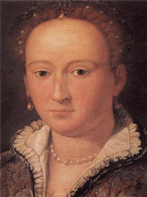 |
 |
Alessandro di Cristofano di Lorenzo del Bronzino Allori (May 31, 1535 - September 22, 1607) was an Italian portrait painter of the late Mannerist Florentine school.
Born in Florence, he was brought up and trained in art by his uncle, Angelo Bronzino, whose name he sometimes assumed in his pictures. Freedburg derides Allori as derivative, claiming he illustrates "the ideal of Maniera by which art (and style) are generated out of pre-existing art." The polish of figures has an unnatural marble-like form as if he aimed for cold statuary. Collaborators include Giovanni Maria Butteri, main pupil: Giovanni Bizzelli.



